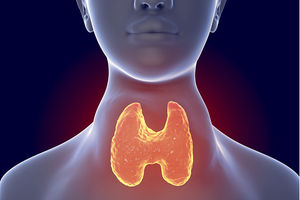How lupus robbed us of our only daughter

Peter Miriti and his wife Jane during an interview at their home in Kileleshwa, Nairobi. They lost their daughter Michelle Makena Miritito (inset) lupus disease.
What you need to know:
- Lupus is an autoimmune disease where the body's immune system becomes hyperactive and attacks healthy tissue
When Michelle Makena was born on March 20, 2000, her parents felt an overwhelming sense of joy and happiness. The world seemed a little brighter and more beautiful as the couple welcomed their only daughter.

Michelle Makena Miriti succumbed to lupus disease.
Makena had entered the world embodying the very essence of her name — which means happiness in Meru.
From the moment she took her first breath, Makena spread light and cheer to everyone. She was vibrant and always full of energy.
But in a heart-wrenching twist of fate, she would be laid to rest the same day she was born 20 years later –March 20, 2020, enveloping her family in a poignant paradox — the day that had brought them their greatest joy also delivered their deepest sorrow.
The family recently shared her memories with Healthy Nation.
Makena took after her father, Mr Peter Miriti, not just her looks and a bright warm smile, but also her passion for environmental conservation. According to Mr Miriti, Makena had learned and memorised the names of all trees she came in contact with, and when time came to join university in 2018, she pursued a Bachelor’s degree in landscape architecture.
Makena took over as the designer and landscaper of her family’s recreational garden in Chogoria, Meru County. She designed the garden’s logo, which the family retained after her death, and ensured that the river which passes through the garden was fortified with bamboo to avoid soil erosion.
Then her world suddenly turned upside down.
Her father remembers that one late afternoon in December, 2019 after Makena completed the second semester of her second year, she called him to say that she had arrived in Nairobi, but that she was feeling weak. Held up, he told her to get a taxi home. Unknown to him, lupus had struck, and Makena’s life was on a countdown.
Lupus is an autoimmune disease where the body's immune system becomes hyperactive and attacks healthy tissue, according to the World Health Organization.
“When she arrived at home, she complained of weakness in the knees and diarrhoea. We thought she had malaria, but the pain got worse and thus we took her to hospital. She was admitted in a Nairobi hospital and diagnosed with Hepatitis A, an inflammation of the liver caused by ingestion of contaminated food and water,” explains Mr Miriti.
Jane Miriti, Makena’s mother, says their daughter was isolated at the hospital for investigations and discharged a week later. However, the joint pains and diarrhoea persisted with no improvement. On the second day after discharge, she was taken to see the family’s doctor in a different hospital, who said she had a blood infection and administered some drugs. Back home, the symptoms persisted.
“The pain was so bad we had to carry her from the house into a vehicle. We took her back to hospital, where she was re-admitted. Her feet started swelling and she struggled to breath. She was immediately taken to the High Dependency Unit , then transferred to the Intensive Care Unit (ICU),” says Ms Miriti.
This time the doctor suspected that she had severe pneumonia, but the tests didn’t confirm it or show what she was suffering from. Her body temperature remained abnormally high while her breathing also became laborious despite being on an oxygen mask. Eventually, she had to be intubated. “This made it completely difficult to talk to her or get her response on how she was feeling. We could only observe her for two consecutive months. It was the most trying, helpless and traumatising time of our lives. She was fed through tubes, but her body slowly started shutting down,” recalls Ms Miriti.

Peter Miriti and his wife Jane during an interview at their home in Kileleshwa, Nairobi. They lost their daughter to lupus disease.
She adds that at some point during treatment, the potassium levels in her blood shot so high the doctors had to put her through dialysis. And then her organs started failing, one after the other. One kidney failed and doctors tried to manage it with drugs. After that, the second one failed and while they tried to rescue it, the lungs collapsed. Soon after that, her heart developed fluid, forcing the doctors to pierce a hole to drain it. As they looked for answers, her brain started swelling,” narrates Ms Miriti.
It was time to consider a brain surgery to reduce the swelling, which was pressing against parts of the brain, but the doctors gave no assurance that the condition would improve. “The doctors, comprising a team of specialists, also felt that they weren’t making any significant progress in managing the sickness.” Makena’s blood platelets also reduced, requiring blood transfusion. Her friends donated blood, hoping that their jovial fellow would come back to them alive and well. Meanwhile, the clock kept ticking.
“It seemed as though she was now a specimen, with the doctors’ conference discussing her unresponsiveness to every treatment every morning. They performed lots of scans and did many blood tests, but her condition continued deteriorating. At one point they tried a single dose worth Sh750,000 on her, but it didn't work,” says Mr Miriti.
Distraught, the family invited a doctor from India to see their daughter, but he was denied access by the hospital . Mr Miriti explains that the hospital does not allow doctors who are not registered with them to treat any of their patients . He adds that their suggestion to airlift Makena to India for diagnosis and treatment was turned down by the hospital.
“We felt that if she had been taken to India, the diagnosis would have been made early enough and thus improved treatment outcomes,” says the couple. Breakthrough came after one and a half months when a doctor at the hospital said it seemed as though Makena’s body was fighting against itself. That’s when she was diagnosed with systemic lupus.
According to the National Institutes of Health, systemic lupus is a disease where the body's defence system attacks healthy cells and tissues, causing damage to many parts of the body.
The diagnosis shocked the family as they had never heard about lupus or seen any family member suffering from the same.
Exactly two months after Makena’s admission to ICU, Mr Miriti and his wife were called by doctors for a family conference. The doctors said they had applied every trick in the book but nothing seemed to be working.
“At 11 am on Saturday, March 7, 2020, just two days after the family conference with the doctors, we received the most unexpected call to urgently report to the ICU.
“We were at the blood donation centre receiving blood from donors to extract the platelets. The doctor on duty took us to the office instead of the ICU room, where Makena was,” says Ms Miriti.
“Without much preparation or counselling, they informed us that our child had died. They said they had tried to resuscitate her, but she did not make it. Then they left us alone to process the heart-wrenching news on our own. We came out of the hospital without our child and with a Sh17 million bill that we had to settle before the body could be released for burial,” recalls Ms Miriti. Makena died a few days to her birthday, and her family decided to bury her on the day she was born. Luckily, the bill was settled by the government, for whom Mr Miriti had served for over two decades. Friends and family members also chipped in.
When Covid-19 hit just five days after her burial, the grieving family was left to pick up the pieces, alone, in the confines of their then relatively new home that they had relocated to four months before Makena’s death.
And then the country was locked down, limiting people from travelling.
“It was a difficult time. Our relatives could not come to grieve with us. It was like a small prison for the four of us (the couple and their other two male children). We created a programme for Bible study on topical issues and discussed death. We had to confront the issue and look at the journey of man from birth to death and thereafter. That helped us get strength and move on,” says Makena’s father.
The family decided they needed to progress Makena’s dreams and aspirations and thus set up Michelle Makena Miriti Trust to carry on her legacy. The trust is anchored on four dreams that she aspired to fulfil in life— protecting the environment, exploring art, and missionary service to support and empower the needy. The trust will also create awareness about lupus and support people living with the sickness in her memory.
“We will bring all these together by constructing a wellness centre in her name. We will only rest when we see that this has happened,” says Ms Miriti.
According to the World Health Organisation, systemic lupus erythematosus is a progressive autoimmune disorder associated with chronic stimulation of various components of the immune system, affecting the skin, joints, kidneys, heart and nervous and haematopoietic systems (the whole system of blood production in the body”.
Annals of the Rheumatic Diseases, a health journal, details that the disease occurs in five out of 100,000 people globally.
Understanding lupus
Dr Philip Simani, a rheumatologist, answers lupus-related questions:
What is lupus and what are its primary symptoms?
Lupus is an autoimmune disease where the body's immune system attacks its own tissues and organs. This causes symptoms of extreme fatigue, joint pains, muscle aches, anaemia, general malaise (a feeling of being unwell), and can result in the destruction of vital organs such as the kidney. The disease profile may vary with different individuals and it can mimic other disorders; hence making it difficult at times to make a diagnosis.
How does lupus present?
Lupus is a multisystem disorder which may present in many different ways. First, we look for evidence of a multisystem disorder such as involvement of the skin, joints, kidney, lining membranes (pleurisy for example), blood, lung and nervous system involvement. These may not all be involved; and presentation may vary from one individual to the other.
We then examine the status of the immune system and look for specific and non-specific symptoms. Non-specific symptoms may include fatigue, weight loss, weight gain, fever or swollen glands. Specific features include skin rashes, photo-sensitivity (sensitivity to sunshine), arthritis, kidney disorder, neurological disorders, blood disorders and immune disorders.
How is lupus diagnosed?
Lupus is diagnosed based on a patient’s history and clinical findings on examination. Various tests are then done to examine if the patient’s immune system is suggestive. Organ specific and general tests may also be done to confirm its multi-systemic nature.
What are the known causes and risk factors?
Lupus is primarily a disease of women in childbearing years, with a ratio of nine to 10 females to one male. Nevertheless, all age groups may be affected though the risk factors decline after menopause.
The reason for this imbalance is not known but hormonal, genetic and environmental factors may play a role.
Hormonal, socioeconomic, dietary, environmental, drugs and viral factors have been found to play a role in causing lupus. Occupational exposures (such as silica) are also thought to play a role.
Lupus may impact patients in many different ways depending on the disease severity and the organs affected or complications experienced.
Sixty per cent of lupus patients live with some type of muscle pain and 90 per cent may have some form of arthritis.
What are common complications associated with lupus?
These are organ-specific and varied depending on how an individual is affected. The most serious complications of lupus involve major organs including heart, kidneys or lungs.
Other patients may have seizures, eye or mouth complications. People with lupus are likely to experience infection and infection-related complications because their immune system is weakened by both the disease and the medication used to treat it.
Management and treatment options
Currently, there’s no cure for lupus. However, many different types of treatments can help manage the symptoms.
Lifestyle changes will involve diet, educating oneself about the disease, regular exercise, and dressing appropriately to avoid excess sun exposure.
Kenya has specialists in many different areas working with lupus patients. Some limitations do exist in availability of drugs and the high prices often charged for medication and services.
Drugs to suppress the immune system are one of the most powerful treatments for lupus.
Side effects are often related to the immune system and opportunistic infections affecting the respiratory, genitourinary systems and skin often occur. There are also many new drugs under development and there is hope in the near future of better quality of life as a result of new therapies.





